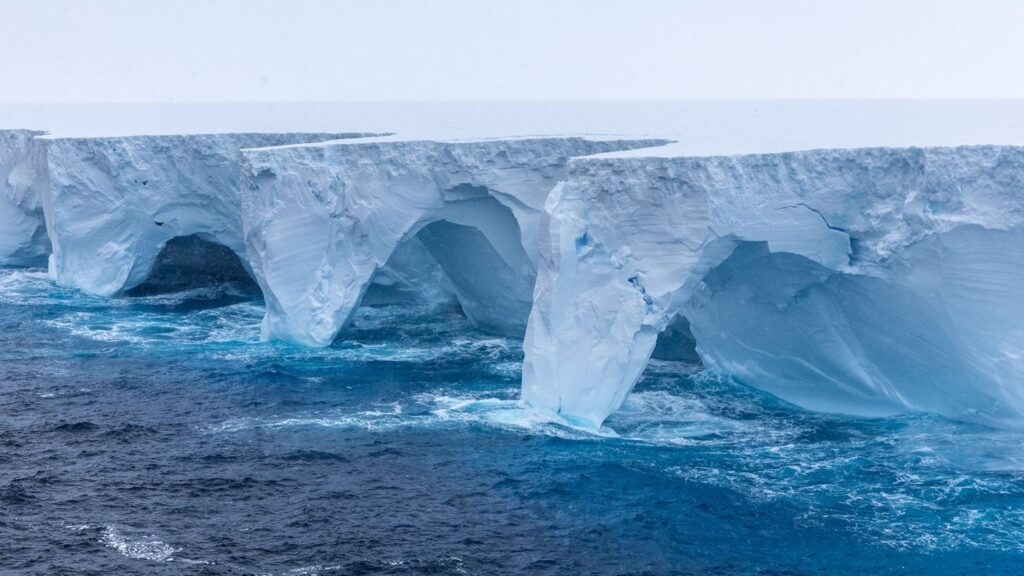ANTARCTICA|SEPTEMBER 5,2025|SKY LINK TIMES|
The mighty Antarctic iceberg A23A, once the world’s largest floating block of ice, is rapidly splintering and shrinking, scientists confirmed this week. The colossal berg, which broke away from Antarctica in 1986, has now lost its title as the biggest iceberg on Earth.

According to researchers at the British Antarctic Survey (BAS), A23A has been overtaken by Britain’s D15A iceberg after shedding huge chunks of ice in recent days. Satellite images from NASA reveal that the iceberg has fractured into smaller pieces, now officially identified as A23D, A23E, and A23F.
From Giant to Fragile
When A23A first calved from the Filchner–Ronne Ice Shelf nearly four decades ago, it remained grounded near Antarctica for years before drifting north. Strong currents eventually carried it toward South Georgia Island, a region notorious for breaking apart icebergs.
Earlier this year, A23A was roughly the size of Rhode Island and carried an estimated weight of one trillion tons. But it has now shrunk to an area closer to the size of Houston, scientists said.
“This is certainly not unprecedented, but every time we see such massive icebergs disintegrate, it’s a spectacular event,” said Ted Scambos, an ice scientist at the University of Colorado.
Also Read: https://skylinktimes.in/new-type-of-supernova-triggered-by-black-hole-star-fatal-tango/
Why It’s Breaking Apart
The iceberg is being weakened by tides, waves, and hidden cracks that are widening as it drifts through warmer waters. “I expect its fracturing will accelerate,” said Andrew Meijers, science director at BAS. “By the end of spring, it may break into pieces too small to track.”
If A23A manages to survive into the Southern Hemisphere summer, Scambos warns it could collapse dramatically in just a single day due to higher water temperatures.
Impact on Sea Levels
Scientists stress that the disintegration of icebergs themselves does not raise sea levels, since they are already floating. However, the process signals a worrying trend: shrinking ice shelves can destabilize land-based glaciers, allowing them to flow faster into the ocean. Unlike icebergs, that glacier melt directly contributes to global sea level rise.
“This is an important reminder of how dynamic Antarctica’s ice environment is,” Scambos said. “We’re watching climate and natural processes unfold in real-time.”
A Global Spectacle
The dramatic breakup of A23A is attracting worldwide attention, not only for its size but also for what it represents in the context of climate change and polar science. While iceberg collapses are part of natural Antarctic cycles, warmer seas are making such events more frequent and more intense.
For now, D15A holds the crown as the world’s largest iceberg. But scientists warn that A23A’s final collapse could be close — a reminder of how fragile even the largest natural structures on our planet can be.
For More Info Stay Tuned: https://skylinktimes.in



